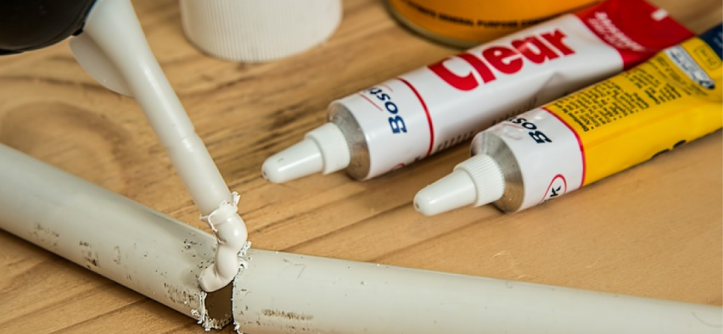Sticking plastic can become a real headache because we must take into account many elements before starting to fix any object in our home or office or before starting any craft; the type of object we want to glue, the glue needed for the occasion, etc.
There are different types of plastics and glues on the market that can be useful for fixing objects or decorating certain spaces, which can be somewhat disconcerting for many people. Next, we explain how to glue plastic step by step, quickly and easily. Choose the right glue, as the case may be, and follow the instructions strictly. Let’s get started!
How to glue plastic
The first thing to consider before gluing any type of plastic is what glue will need to be used. If it is flexible plastic, solvent cement is a good option, as it will offer you the most satisfactory results. UV (ultraviolet light-curing) adhesives are also an alternative since they are used to bond PVC plastics, both rigid and flexible. Cyanoacrylate adhesive, for its part, is very useful, since it is instantaneous.
To glue flexible plastic, it is necessary to follow the following steps:
- Clean dust, grease, and impurities from the surfaces to be glued. Do this with a dry towel.
- Carefully read the instructions for the use of the glue on its packaging, as this will ensure that you do not make mistakes when applying the product.
- In general, you should keep in mind that you will have to glue an even amount of glue on the surface.
- Let the glue dry for five minutes.
- Join the surfaces, applying pressure to them for about a minute. Avoid applying excessive force, as the glue could come off the sides.
With these instructions, you can glue flexible plastic without problems, whatever its type. Next, let’s see how to work with other common types of plastic at home and work.
How to weld rigid plastic
By welding plastic, you can correct breaks in personal objects and household furniture, avoiding unnecessary expenses. Also, this type of plastic is very common in toys and other crafts. To weld rigid plastic, it is best to use a hot air welder. Follow the steps below to weld safely and effectively:
- Make sure you have plastics of the same type. You can be sure of the type of plastic you are dealing with based on the initials that appear on the surface.
- Get a suitable nozzle; it can be circular or triangular.
- Preheat the soldering iron according to the manufacturer’s specifications. The process usually takes about 20 minutes.
- Wash the surfaces to be welded with soap and water. Then dry with a cloth.
- Sand the surfaces to be welded until the first layer of plastic is removed. This will open the pores on the surface and improve grip.
- Fix and dot the two surfaces to be welded.
- Insert the welding rod into the nozzle and then slide the welder’s tip at a moderate speed towards the surfaces to be joined.
- Let the surface cool and sand again to make it smooth to the touch.
- Remember to wear protective goggles and tilt the welder at a 45-degree angle for best results.
By following these steps, you will have perfect and durable joints on rigid plastics. Now, let’s see how to glue other common types of plastic, like ABS.
How to glue ABS plastic
ABS plastic (acrylonitrile butadiene styrene) stands out for its high resistance to violent impacts, which is why it is widely used industrially. To glue this type of plastics, UV and cyanoacrylate adhesives are ideal, as they improve the durability of adhesion. Follow the steps below to perform the process properly:
- Clean surfaces well before bonding.
- Lightly sand the surfaces, creating roughness in them to optimize adhesion.
- Remember to read the instructions for use beforehand. If the surface is very small, please use a needle.
- Join the pieces together smoothly, avoid the formation of air bubbles, and glue spilling down the sides.
Keep the pieces firm and in place. While some adhesives are instant, others can take up to 24 hours to complete.
Another alternative is to glue the ABS plastic using pure acetone. If you want to implement this option, follow the steps below:
- Get an empty nail paint container.
- Fill half the container with acetone.
- Add pieces of ABS plastic to the acetone, filling 3/4 of the container.
- Cover the container tightly and shake vigorously for five seconds.
- Let the mixture sit for a couple of hours until it reaches a uniform composition.
- Add the solution with a brush on the surfaces to be glued.
- Join both surfaces, applying moderate pressure on them for a minute.





Leave a Reply
You must be logged in to post a comment.